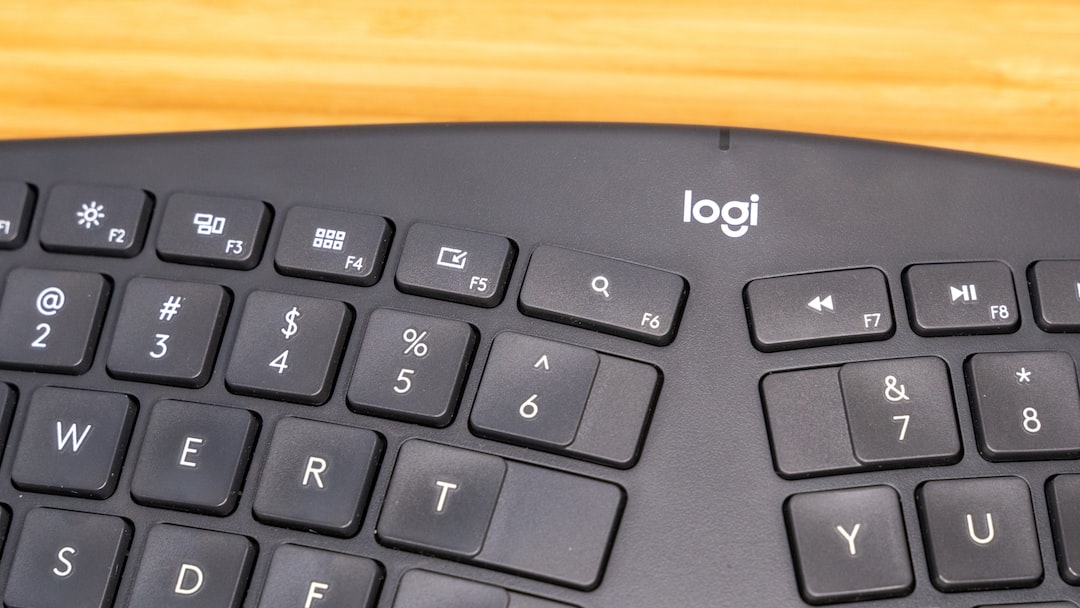The world today is all about inclusivity, diversity, and representation. We live in an era where being woke isn’t just a trend; it’s a lifestyle. 🌈 As Gen-Z, we’re pushing boundaries and reshaping norms, but there’s one aspect that often gets overlooked in the design world: accessibility. Designing with accessibility in mind isn’t just a good practice; it’s a responsibility. Whether it’s a social media post, a website, or a mobile app, making sure that your design is accessible to everyone is crucial. Let’s dive into the art of designing for accessibility and unlock tips and best practices that’ll make your creative work resonate with all audiences.
Understanding Accessibility
When we talk about accessibility, we’re referring to the ease with which everyone can engage with your design. This includes individuals with disabilities—be it visual impairments, hearing difficulties, or mobility issues—alongside those who may face situational limitations like poor internet connectivity or limited tech literacy. Think about it: your masterpiece shouldn’t just be a vibe for some; it should be a vibe for all! 🌍
Accessibility isn’t just about compliance with laws or regulations—it’s about empathy and inclusivity. When you design with accessibility in mind, you demonstrate respect for diverse audiences and broaden your reach. No one likes to feel excluded or overlooked. So let’s break it down and explore how you can craft designs that are accessible and engaging for everyone.
Why Accessibility Matters
Accessibility is a non-negotiable part of the design process. It’s like ensuring your party is open to everyone, not just your inner circle. For starters, consider the numbers: approximately 15% of the global population lives with some form of disability. 💬 That’s over a billion people! By not designing with accessibility in mind, you’re essentially locking them out of your content. It’s like throwing the dopest party but only inviting a few select friends, leaving everyone else outside.
Furthermore, accessible designs generally enhance user experience for everyone, not just those with disabilities. Better readability, smoother navigation—these are perks everyone gets to enjoy. This leads to improved engagement, greater brand loyalty, and yes, even more eyes on your content! Think about it: more views = more vibes, right?
Guidelines for Accessible Design
Creating an accessible design isn’t just guesswork; there are established guidelines—like the Web Content Accessibility Guidelines (WCAG)—that provide a roadmap. Let’s break these down to work towards rad designs that won’t leave anyone behind.
Perceivable Information
All content should be presentable to users in ways they can perceive. If some users can’t see or hear your content, it’s time to step up! Here are tips to make your designs perceivable:
- Alt Text for Images: Always provide alternative text for images. A picture might be worth a thousand words, but if it’s not described, it’s basically silent for those using screen readers. 🎨
- Transcripts for Audio/Video: If you’ve got dope video content, include captions and transcripts so every vibe can be included. People love to share the feels, so let everyone in!
- Readable Fonts: Choose font styles that are easy to read. Avoid overly decorative fonts that can be hard to decipher. Sans-serif fonts are often more legible than serif fonts for screen content.
Operable Interfaces
Your design needs to be functional for people to use it. Let’s make that interface not just operable but also enjoyable:
- Keyboard Navigation: Not everyone can use a mouse. Ensure that all touchpoints (like buttons and links) can be navigated using a keyboard alone.
- Time Limits: For processes that involve time constraints (like filling out forms), always offer an option to extend or remove the time limit. Not everyone moves at the same pace, and that’s okay! ⏳
- Clear Labels: Every button and label should clearly describe its function. If a button says “Submit” rather than “Click Here,” even Grandma can vibe with it!
Understandable Content
We must ensure our content is easy to understand. Clarity goes a long way, fam:
- Simple Language: Use straightforward language. While you may want to flex your vocab, remember that complex words can trip people up.
- Consistent Navigation: Keep the layout and navigation generally consistent across your site or app. Don’t make users guess where they’re going next! 🧭
- Error Suggestions: If a form is filled out incorrectly, provide clear suggestions to guide users on what to fix. Nobody likes being left in the dark!
Robust Design
Your design should work across multiple devices and platforms. Just because it’s lit on your phone doesn’t mean it will look as fresh on someone else’s. Here’s how to ensure it’s robust:
- Cross-Browser Compatibility: Test your design on different browsers to ensure it looks good everywhere. Firefox and Chrome may treat your design differently, so fight for uniformity! 🔧
- Fit for All Screens: Responsive design is key, ensuring everything scales down (or up) perfectly on different devices. Think mobile first; that’s where most heads are at! 📱
- Semantic HTML: Using proper HTML elements helps assistive technologies to better interpret your content. This might sound nerdy, but trust—the tech will thank you!
Design Principles for Inclusivity
Designing for accessibility requires a mindset transformation. It’s like flipping the switch to “accept everyone.” Here are a few principles to keep in mind while creating your designs:
Be Mindful of Color
Color plays a major role in conveying your message. But let’s keep it real: not all of us see colors in the same way. Here’s how to ensure your color choices don’t leave anyone out:
- Contrast is Key: Make sure there’s enough contrast between your text and background. Light text on a light background? Major NOPE. 🔴
- Color Isn’t Everything: Don’t rely solely on colors to convey important information. Use shapes, icons, or text labels. Blind folks (and colorblind friends) will appreciate it!
- Test Your Palettes: Use accessible color palette tools online to see how your design holds up. Resources like contrast checkers can save you from looking like a total rookie.
Typography Matters
Your choice of typography can either attract or repel users. Here’s how to stay on the right side of that:
- Font Size: Choose a base size that’s readable, generally around 16px. Too small? That’s a hard pass!
- Line Height: Good line spacing can improve readability. Aim for 1.5 times the font size for the best flow.
- Avoid All Caps: Using all caps can be hard to read. Stick to sentence case or title case to keep it chill. You’re not trying to yell!
Scannable Content
Ever tried reading a wall of text? It’s like trying to swim through molasses. Make your content scannable:
- Headings and Subheadings: Breaking text into sections helps users understand the structure. It’s like a roadmap for your content. 🚦
- Bullet Points: Using bullet points can condense information and make it more digestible. Lists are your friend!
- Short Paragraphs: Keep paragraphs concise. Aim for no more than 2-3 sentences! Your audience will thank you.
The Power of User Testing
Before launching your design into the wild, user testing can be a game-changer. This allows you to gather feedback from real users, especially those with disabilities. It’s their lived experience that’ll inform you best. Here’s how to structure your testing:
- Focus Groups: Assemble a diverse group of testers. Get feedback from users with different abilities, backgrounds, and experiences to get a full picture.
- Create Scenarios: Set realistic scenarios for your testers. “How would you search for a product?” can lead to invaluable insights. 🕵️♀️
- Iterate Based on Feedback: Take the critiques to heart and improve your design iterations. Remember, even the best artists refine their work over time.
Accessibility Tools and Resources
Alright, fam—just telling you to design accessibly is one thing, but let’s arm you with some tools that’ll help make it happen. Here’s a list of resources that can make your design game strong:
- WAVE: A web accessibility evaluation tool that helps you identify accessibility issues on your website.
- A11Y Color Contrast Checker: Handy for checking whether your color combinations meet accessibility standards.
- Screen Reader Software: Use screen readers yourself to understand how your content is read out loud. Examples includes NVDA and VoiceOver.
- WebAIM: Provides articles and tools focused on web accessibility.
- Color Oracle: A color blindness simulator that shows you what your design looks like to someone with color vision deficiency.
The Real Deal on Compliance
As we wrap up the practical bits, let’s talk legal. Countries have laid down laws to ensure that digital spaces are accessible for all. Understanding these laws and why they matter is key, especially for designers who want to play it safe:
Legal Frameworks to Know
Familiarizing yourself with these frameworks can help your designs stay compliant while making a positive impact:
- Americans with Disabilities Act (ADA): In the U.S., this legislation requires public places—including websites—to be accessible.
- Web Content Accessibility Guidelines (WCAG): An international standard for web accessibility, often seen as the gold standard for design practices.
- Equalities Act (2010): In the UK, this law requires that individuals are not discriminated against because of disability.
Non-compliance can not only lead to legal issues but can also severely hurt your brand integrity. So stay woke and ensure your designs are not just lit, but accessible too! ⚖️
Here are some FAQ’s to peel back the layers on accessibility:
FAQ
What is digital accessibility?
Digital accessibility means creating websites and digital tools that everyone can use, including people with disabilities. It’s all about breaking down barriers!
How do I know if my design is accessible?
Use accessibility tools like WAVE or engage in user testing to gather feedback from users with various abilities. They’ll provide the most genuine insights.
Does accessibility really matter in design?
Absolutely! Designing for accessibility not only serves a social responsibility but also includes broader audiences, improving usability and paving the way for greater engagement.
Are there legal requirements for accessibility?
Yes, many countries have laws in place to ensure digital spaces are accessible, including the ADA in the U.S. and the Equality Act in the UK.
How do I choose colors for accessibility?
Ensure high contrast between text and background, avoid color dependence for meaning, and test your palettes using tools dedicated to color accessibility.
Designing with accessibility in mind is not just a trend; it’s a movement that we, as Gen-Z creators and innovators, must champion. In our hands, we wield the power to create inclusive spaces that reflect the diverse tapestry of the world we live in. With these tips, best practices, and a diverse mindset, we can design a future that all vibes can enjoy. Remember: Inclusivity is not just a checkbox; it’s a core value that defines the art of great design! 🙌🏽
Sources & References
- W3C Web Content Accessibility Guidelines (WCAG)
- WebAIM: Overview of Web Accessibility
- American with Disabilities Act (ADA)
- Equalities Act (2010) UK Legislation
- Color Contrast Checkers and Accessibility Tools from WAVE
Keep creating, stay inclusive, and let’s make the digital space a better place for everyone!




